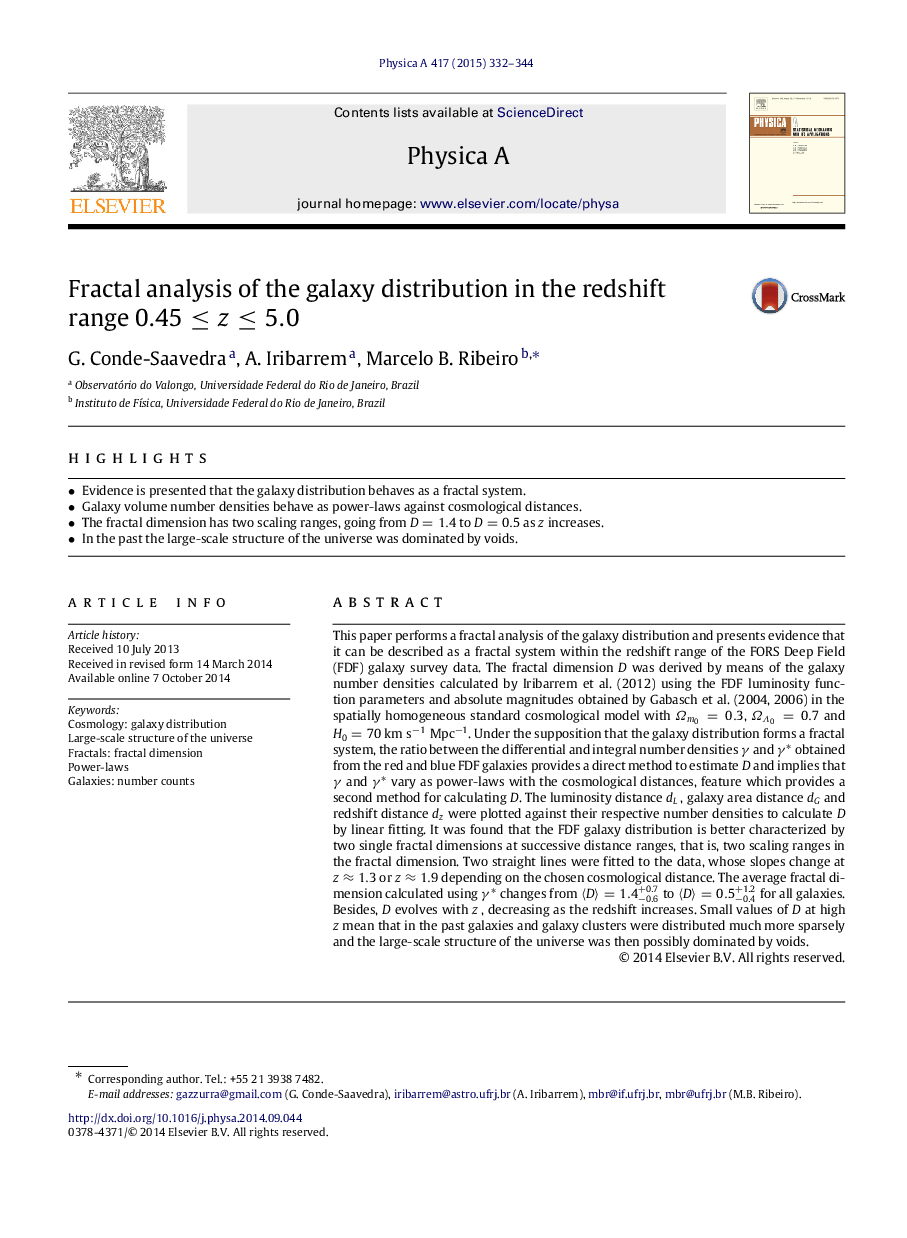| کد مقاله | کد نشریه | سال انتشار | مقاله انگلیسی | نسخه تمام متن |
|---|---|---|---|---|
| 977137 | 1480156 | 2015 | 13 صفحه PDF | دانلود رایگان |

• Evidence is presented that the galaxy distribution behaves as a fractal system.
• Galaxy volume number densities behave as power-laws against cosmological distances.
• The fractal dimension has two scaling ranges, going from D=1.4D=1.4 to D=0.5D=0.5 as zz increases.
• In the past the large-scale structure of the universe was dominated by voids.
This paper performs a fractal analysis of the galaxy distribution and presents evidence that it can be described as a fractal system within the redshift range of the FORS Deep Field (FDF) galaxy survey data. The fractal dimension DD was derived by means of the galaxy number densities calculated by Iribarrem et al. (2012) using the FDF luminosity function parameters and absolute magnitudes obtained by Gabasch et al. (2004, 2006) in the spatially homogeneous standard cosmological model with Ωm0=0.3Ωm0=0.3, ΩΛ0=0.7ΩΛ0=0.7 and H0=70kms−1Mpc−1. Under the supposition that the galaxy distribution forms a fractal system, the ratio between the differential and integral number densities γγ and γ∗γ∗ obtained from the red and blue FDF galaxies provides a direct method to estimate DD and implies that γγ and γ∗γ∗ vary as power-laws with the cosmological distances, feature which provides a second method for calculating DD. The luminosity distance dL, galaxy area distance dGdG and redshift distance dzdz were plotted against their respective number densities to calculate DD by linear fitting. It was found that the FDF galaxy distribution is better characterized by two single fractal dimensions at successive distance ranges, that is, two scaling ranges in the fractal dimension. Two straight lines were fitted to the data, whose slopes change at z≈1.3z≈1.3 or z≈1.9z≈1.9 depending on the chosen cosmological distance. The average fractal dimension calculated using γ∗γ∗ changes from 〈D〉=1.4−0.6+0.7 to 〈D〉=0.5−0.4+1.2 for all galaxies. Besides, DD evolves with z, decreasing as the redshift increases. Small values of DD at high zz mean that in the past galaxies and galaxy clusters were distributed much more sparsely and the large-scale structure of the universe was then possibly dominated by voids.
Journal: Physica A: Statistical Mechanics and its Applications - Volume 417, 1 January 2015, Pages 332–344